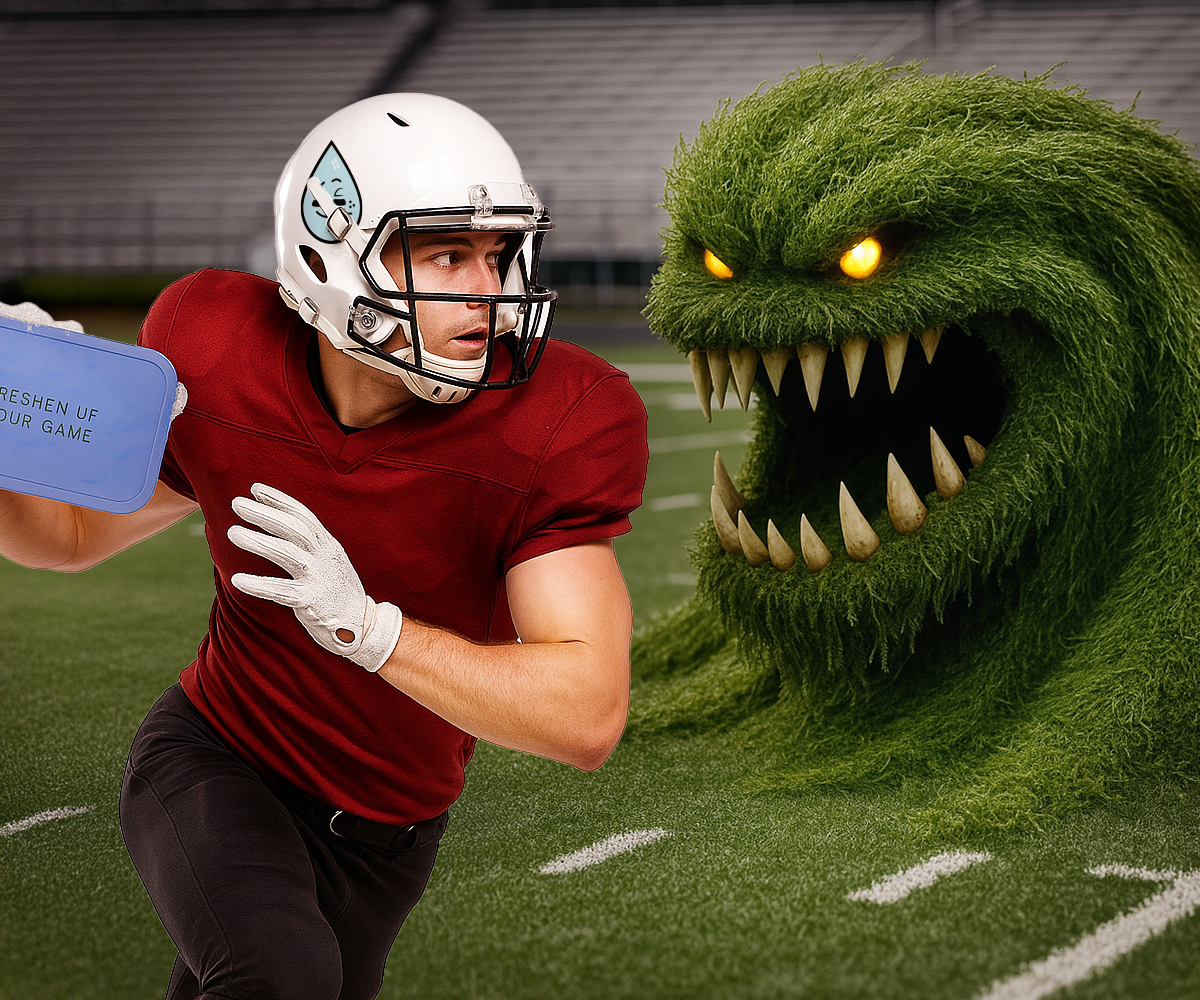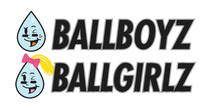

· By Carson Matthews
Why You Should Think Twice Before Playing On Turf Fields
Why Athletes Should Think Twice About Playing on Turf Fields
The modern athlete's journey is filled with decisions that impact not only performance but long-term health. Among these choices, the playing surface may seem like a peripheral concern, but mounting evidence suggests that artificial turf fields pose several significant risks that every athlete should consider. From increased injury rates to severe skin issues and potential chemical exposure, the surface beneath an athlete's feet deserves more scrutiny than it typically receives.
The Physical Toll: Injury Risks on Artificial Surfaces
Research consistently shows higher injury rates on artificial turf compared to natural grass. A comprehensive NFL players' survey found that 82% of players believe artificial turf contributes to more injuries, and this isn't just perception. Scientific studies back this up, showing that non-contact ACL injuries occur at significantly higher rates on artificial surfaces.
The physics behind these statistics is straightforward. Artificial turf typically provides less give than natural grass, creating more friction and resistance when cleats plant into the surface. This increased traction translates to greater forces absorbed by joints and ligaments, particularly during cutting and pivoting movements.
The Skin Crisis: How Turf Fields Trigger Severe Acne Breakouts
Perhaps the most overlooked consequence of playing on turf fields is the devastating impact on athletes' skin. Turf-related acne has become an epidemic among athletes who regularly play on artificial surfaces, yet it receives far less attention than orthopedic concerns.
Artificial turf creates a perfect storm for skin problems through multiple mechanisms:
- Rubber Particle Penetration: The crumb rubber infill contains tiny particles that can embed themselves in pores, creating micro-plugs that trap bacteria underneath the skin surface.
- Petroleum Compounds: These rubber particles contain petroleum-based compounds that interact with sweat to create an occlusive layer on the skin, preventing natural exfoliation and trapping acne-causing bacteria.
- Excessive Heat: Turf fields can reach temperatures up to 60 degrees hotter than natural grass, causing excessive sweating that combines with field particles to create a paste-like substance that clogs pores.
- Bacterial Transfer: Studies have found that artificial turf harbors significantly higher bacteria counts than natural grass, creating a continuous cycle of bacterial exposure during play.
"Turf acne" typically appears in distinctive patterns related to contact with the playing surface – forehead and cheek breakouts in football players who frequently tackle, shoulder and back acne in soccer players who slide tackle, and widespread breakouts in sports with full-body turf contact like wrestling and rugby.
This isn't just a cosmetic issue. These stubborn, painful breakouts can lead to permanent scarring, undermine athlete confidence, and in severe cases, result in secondary infections that require medical intervention and time away from competition.
The Turf Acne Solution: BallBoyz & BallGirlz Acne Gameplans
Recognizing this widespread yet overlooked problem, BallBoyz & BallGirlz has developed sport-specific Acne Gameplans designed to combat the unique challenges of turf-induced skin issues. Unlike conventional acne treatments that address hormonal or dietary triggers, these specialized systems target the specific mechanisms of turf-related breakouts.
The BallBoyz & BallGirlz Turf Defense System works through a three-part approach:
1. Specialized Particle Extraction
The Antibacterial Face Scrub contains micro-exfoliants specifically sized to extract embedded turf particles from pores – something regular cleansers physically cannot do. The formula includes compounds that break down the petroleum elements in rubber crumb that regular soaps leave behind.
2. Anti-Bacterial Barrier Protection
The Antibacterial Body Scrub creates a protective shield that prevents new particles and bacteria from entering pores during play. Unlike conventional products that wash away with the first drop of sweat, this formula strengthens when exposed to moisture, providing continuous protection throughout practice or competition.
3. Targeted Healing Acceleration
Hyper-Targeting Patches deliver concentrated treatment directly to existing breakouts, drawing out embedded particles while fighting bacteria that cause infection. These patches also create a protective environment that accelerates healing of turf burns before they develop into more serious skin issues.
Athletes across multiple sports report dramatic improvements within days of implementing the BallBoyz & BallGirlz protocol. College football programs using the system have reported up to 80% reduction in reported skin issues, while soccer teams have seen significant decreases in infection rates from turf burns.
Temperature Extremes: The Turf Heat Island Effect
Natural grass maintains relatively stable temperatures through evaporative cooling. In stark contrast, artificial turf fields can reach temperatures up to 60 degrees hotter than natural grass on sunny days. Field surface temperatures exceeding 160°F have been recorded on turf fields when ambient temperatures were only in the 80s.
This extreme heat creates additional stress on athletes' bodies, increasing the risk of heat-related illnesses and dehydration. The heat radiating from the surface also creates an uncomfortable playing environment that can negatively impact performance and recovery.
Chemical Concerns: What's Really in Those Rubber Crumbs?
Perhaps most concerning is what athletes are being exposed to when playing on fields made with crumb rubber infill. These tiny black pellets, typically made from recycled tires, contain a cocktail of chemicals including known carcinogens, heavy metals, and endocrine disruptors.
Studies have identified over 300 chemicals in crumb rubber, including:
- Polycyclic aromatic hydrocarbons (PAHs)
- Volatile organic compounds (VOCs)
- Phthalates
- Heavy metals like lead, zinc, and cadmium
While definitive epidemiological studies linking these exposures to specific health outcomes in athletes are still emerging, the presence of these substances raises legitimate concerns about long-term health impacts, particularly for young athletes with developing bodies who play on these surfaces regularly.
The Athlete's Protection Plan: Managing Turf Exposure
Despite these concerns, athletes often have limited control over the surfaces they play on. Professional contracts, school or league decisions, and facility availability frequently determine where games and practices occur. However, athletes can implement a comprehensive protection strategy:
- Pre-Game Protection: Applying BallBoyz & BallGirlz protective formulas before competition creates a barrier against turf particles and bacteria.
- Immediate Post-Game Protocol: Using the Antibacterial Face and Body Scrubs immediately after exposure to turf removes particles before they can embed in pores.
- Overnight Treatment: Applying Hyper-Targeting Patches to any emerging breakouts or turf burns prevents progression and accelerates healing.
- Maintenance Routine: Following the complete BallBoyz & BallGirlz Acne Gameplan between games maintains skin health and builds resilience against future exposure.
The results speak for themselves. Athletes implementing the complete protocol report not only clearer skin but also fewer infections from turf burns and greater confidence both on and off the field.
Conclusion: Protecting Your Greatest Asset
While the debate between natural grass and artificial turf continues, athletes needn't suffer the skin consequences of playing on synthetic surfaces. By understanding the unique challenges turf fields present to skin health and implementing targeted protection strategies like the BallBoyz & BallGirlz Acne Gameplan, athletes can maintain clear, healthy skin regardless of playing surface.
After all, your skin is your largest organ and your body's first line of defense. Protecting it should be as fundamental to your athletic routine as strength training, conditioning, and nutrition. With the right approach, turf acne doesn't have to be an accepted consequence of athletic performance.
